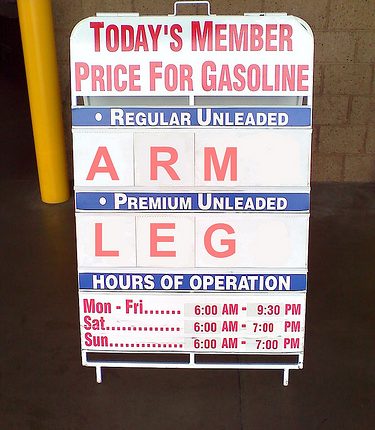Editor’s Note: The MarketingExperiments community is an interactive group with a great deal of questions and answers between marketers and their peers as well as with the MarketingExperiments staff. Occasionally we publish these interactions on the blog when we think there is a particularly good question that our readers can benefit from…
QUESTION:
I am in the process of doing a short survey of our clients to gauge interest in some new products we will be introducing in the fall. I want to find out what they would be willing to pay for these individual products.
 My gut tells me that if I list three prices, they will always select the least expensive. Is there a way to ask a price (or range-of-price) question that truly elicits a reasonable response?
My gut tells me that if I list three prices, they will always select the least expensive. Is there a way to ask a price (or range-of-price) question that truly elicits a reasonable response?
We are doing the A/B/C testing on price once we roll out the products. I am now at the point of trying to determine where to set price for testing purposes. Any guidance you could provide would be greatly appreciated.
Deborah
Vice President of Marketing
Overland Park, Kansas
ANSWER:
Deborah, your sense is consistent with our experience. Asking customers what they would be willing to pay is at best an unreliable way to determine the optimal price for a new product. The two best approaches in our experience are to base initial new product prices either on “comparables” or “value.”
Comparables: If there are other similar products on the market, then you can get a sense for a good starting point based upon the range of what customers are already paying for the closest competitive offerings.
Value: If there is insufficient information available about comparables (e.g., because the new products are truly breakthrough in nature), then you can try to discover what your ideal customers are currently paying to satisfy the need your new product fulfills, or what it is currently costing them by failing to satisfy the need.
For example, let’s say you make a webcam system for builders and commercial developers that would allow them to remotely monitor their building sites for theft and vandalism over the Internet. You might base your initial per-camera pricing on what it costs to hire a nighttime security agency to guard an equivalent area.
Or you could base pricing on building industry and insurance industry statistics about average annual losses due to theft and vandalism and on the rates to insure unsecured building sites. Then, determine whether adding your system might, in addition to reducing losses, qualify to reduce those insurance rates. This is referred to as “value-based pricing.”
You may be able to extract value from customer surveys by asking them about the nature and annual costs of the problems that your new product addresses and how much it currently costs them to either solve or make do without a solution.
Again, though, once they perceive the risk that their answers might influence future product pricing, the predictive accuracy diminishes quickly.
I hope this is helpful, Deborah.
All the best,
Bob Kemper
Director of Sciences
MECLABS Group, LLC
Related Resources
Price testing online subscriptions
Landing Page Optimization – Finding ideal price points
Offer Pricing – How to test and optimize your pricing



